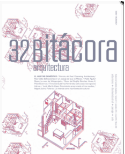Editorial 32
Main Article Content
Abstract
The purest definition of architecture suggests that the possibility of dwelling is the characteristic that distinguishes it from the other arts and, as a result, becomes part of its most basic definition. This is, however, a characteristic that escapes architecture’s control since it depends solely on users’ abilities to appropriate space –something that can’t be scientifically measured or known ahead of time. This contradiction is particularly expressed within the condition of domestic dwelling.
We have to question the contemporary meaning and possibility –or impossibility– of dwelling in a world where to reside is not limited to having a street address, where one spends more time commuting than at one’s own home, where thousands of people migrate to other lands because of political or economic reasons, and where our relationships with other people take place in the virtual space of social networks.
The increasingly obvious insertion of the subject that experiences domestic space as a way to evaluate the architectural work; the careful study of that experience as raw material for design; in addition to the participation of the user in the design and construction process are strategies to disarming architecture as an artistic practice –to leave its very traces in the very matter that makes up the home. These appear to us as possibilities for dwelling in the present. Despite this, many of these cases lack a critical evaluation.
Article Details
Citas en Dimensions Service
Bitácora Arquitectura by Universidad Nacional Autónoma de México is licensed under a Creative Commons Reconocimiento-NoComercial-SinObraDerivada 4.0 Internacional License.
Creado a partir de la obra en http://arquitectura.unam.mx/bitacora.html.

